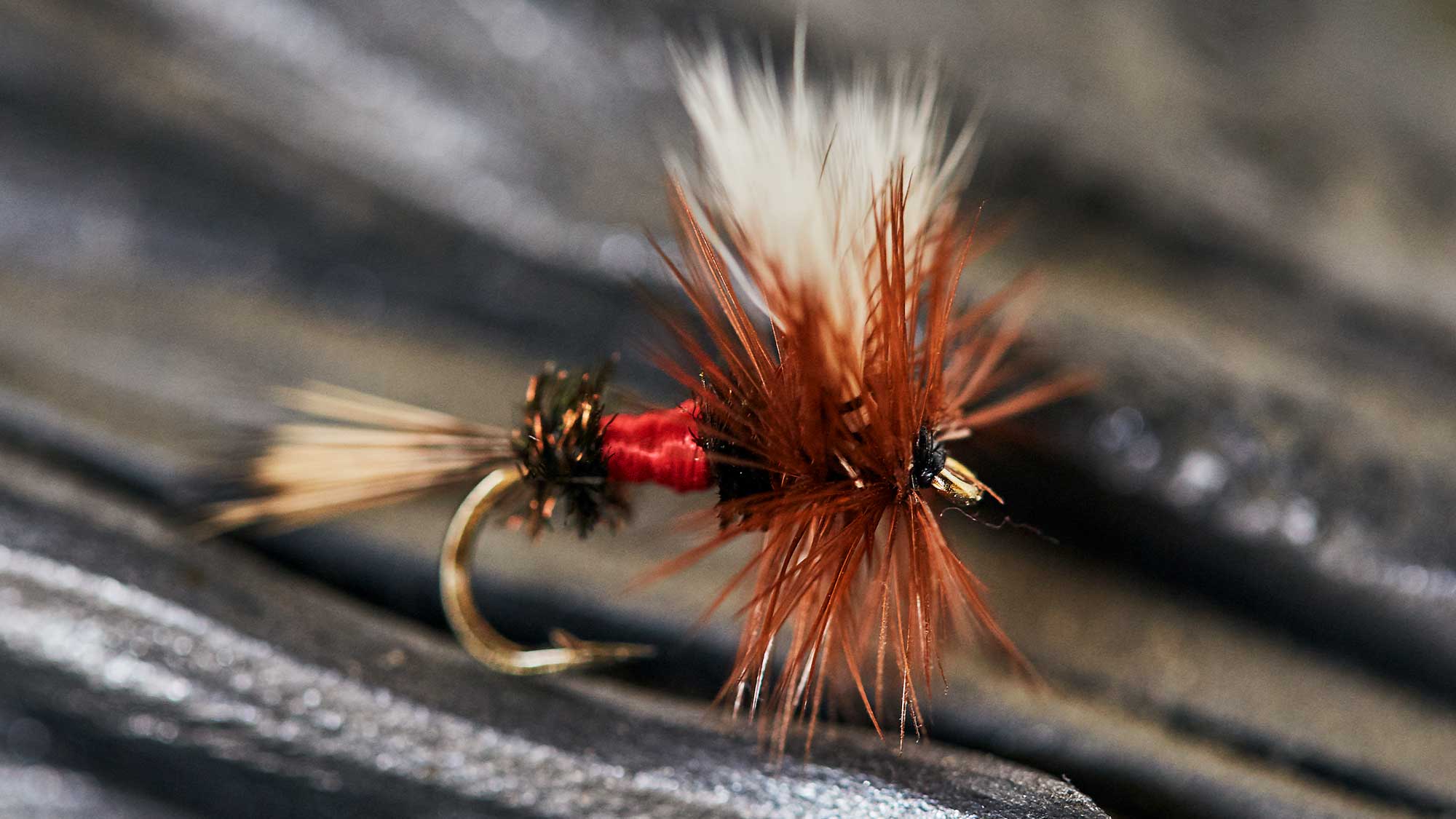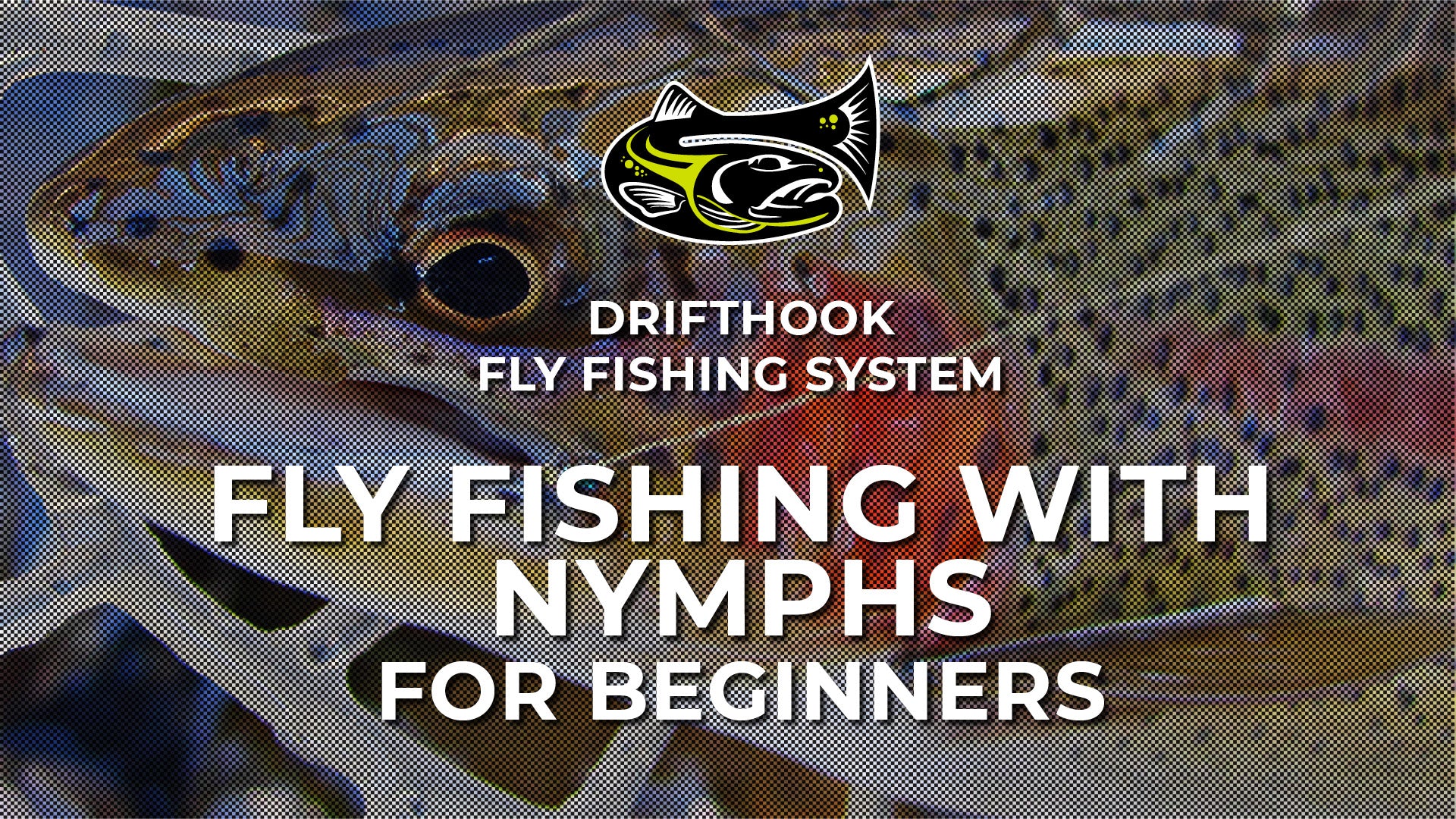Fly fishing is one of the most satisfying and enjoyable forms of fishing there is. And for a certain kind of fisherman, nothing else comes close. Still, it can be a little overwhelming for the newcomer. When looking at a person fly fishing you might think to yourself that you need to by a ton of gear and it can be tricky to keep up with it all, and those who are unaccustomed to wearing waders can find them cumbersome, and even make them feel silly. At some time or another, virtually every fly fisherman has asked themselves...

"Do I Need to Wear Waders to Fly Fish?"
If you've spent years feeling uncomfortable or hindered by your waders and are looking for an alternative, understand this.
You do not need waders to fly fish successfully.
There are many out there who can (and do) find great success fly fishing without waders. Some advice against wading under any circumstances. Or who at the very least advocate seeing what you can catch from the bank before venturing into the water. It’s also worth pointing out that waders, when not worn with a belt, can also represent a serious safety risk (we’ll get into that later).
There are plenty out there who feel that getting into fly fishing is cost-prohibitive enough without paying top dollar for a good set of waders. However, if you're thinking of doing without them, it's essential to understand why they're helpful and why so many consider them necessary so that you can act appropriately. Waders may not be essential, but they sure make standing in water more comfortable. They also make casting more manageable by giving you a better choice of spots, allowing you to reach areas that are harder to access from the land.
Waders may not be essential, but they sure make standing in water more comfortable. They also make casting more manageable by giving you a better choice of spots, allowing you to reach areas that are harder to access from the land.
While you may find that you can (and may prefer to) fly fish without waders, if you already own a pair, we wouldn't advocate throwing them away just yet. Think of them as just another tool at your disposal. One that you are free to use as the situation demands.
So, How Do You Fly Fish Without Waders?
If you're new to fly fishing, you may only have seen others fly fish from the water with waders. So you may not know that you don't always have to stray from the shore to fly fish. That said, the reason why many prefer to get into the water (aside from the inherent sense of adventure that wading provides) is because there are several obstacles to fly fishing on land. Long casting with obstructions behind you can create complications when fishing from the bank. The last thing you need is for flies to get stuck in a tree as you cast, or to spend 20 minutes untangling your line from a nearby shrub.
Long casting with obstructions behind you can create complications when fishing from the bank. The last thing you need is for flies to get stuck in a tree as you cast, or to spend 20 minutes untangling your line from a nearby shrub.
To fly fish successfully without waders, you’ll need to rethink your casting technique. If you are tucked into a tight area the roll cast and side cast will be essential to success when fly fishing from the shore or bank.
The side cast is useful for when you're casting directly up or downstream, casting in a direction that runs parallel to the shoreline.
The roll cast, however, is useful when you need to reach far across the water, but you have an obstacle behind you like a tree or bush.
If you’re new to fly fishing, you likely haven’t learned the roll cast or used it very often. Therefore, if you’re thinking of fly fishing without waders, you’ll need to spend some time practicing this technique. This video may be useful in helping you to perfect your technique.
To summarize, roll casting requires you to lift the tip of your rod and quickly flip it forward, creating a moving roll in the line, which will help you to direct your fly with power and accuracy.
The limitations of using waders
So, as you can see, casting from the shore may require you to change your technique and learn new skills. However, it can allow you to overcome some of the inherent limitations of using waders.

For example, one variety of waders are made from neoprene- which, while eminently waterproof, can cause you to get really hot, even in cold water. Neoprene waders will be fine if you'll be fly fishing exclusively in the colder seasons, but for summer, you may also consider a pair of light and breathable nylon waders as they are more comfortable and with the latest technologies are almost cut to be worn like a pair of jeans.
But with these new technologies there are still some downsides to waders:
- Some fisheries prohibit the felt-soled boots used with many waders
- They can get tricky to walk in when fishing in remote spots
- They can be bulky to pack, especially when using boot foot waders
- They can tear and spring leaks, which can be both very frustrating and extremely uncomfortable
- They can be dangerous when not used properly

So, if you can fly fish without waders, why do so many still wear them?
If you find waders uncomfortable, restrictive, or cumbersome to wear, you may wonder why so many people choose to wear waders if they don't have to. Yet, while they may not be essential, there are certain circumstances where wearing waders can increase your chances of a successful trip.
They allow you to cast from a much greater range of positions. You can reach deeper waters and wade across streams with relative ease without worrying about getting so wet and cold that you risk damaging your health (or at least souring your trip).
Before you throw out the idea of using waders altogether, let me give you the benefits so you can make an informed decision;
- They make it easier to cross deep waters.
- They keep you warm and allow you to fish for more extended periods.
- You can kneel without getting wet for catch & release fishing.
- You can take breaks without needing to dry off.
- You can get in a more central location in the water for a nice, clear cast.
- Most have additional space in which to store your gear.
- They can help keep you dry when fishing in rainy conditions.
- Felt soled wader boots give you superior traction when walking in the water, reducing the risk of slipping.
 Get Wader Wise: Wearing Your Waders Safely.
Get Wader Wise: Wearing Your Waders Safely.
This last point brings us to something worth making extra clear.
When fly fishing with or without waders, a safety-first approach is essential. Waders represent many potential advantages, but they can also be a potential safety risk. Falling into the water while wearing waders can cause them to fill with water quickly and pull you to the bottom of the water, creating a severe drowning risk, which is why a safety belt is absolutely essential when wearing waders. When wearing waders on a boat, you should always use a life jacket to ensure safe floatation.
Speaking of which, if you're using a float tube, waders are recommended. Not only will they make sitting in your float tube much more comfortable, but they can also protect your legs from curious or hungry aquatic lifeforms such as leaches. Dangling a bare leg in the water is an open invitation to leeches. When using a float tube, stocking foot waders are much more comfortable and less cumbersome.
Putting Your Best Foot Forward with and Without Waders
When deciding whether or not you need to wear waders to fly fish, you should consider the footwear you'll need for your fishing trips. When fly fishing without waders, a pair of barn boots will help you to get a little closer to where fish are holding, but be wary of getting so deep that they fill with water. You may get closer still with a good pair of hip boots but expect to get wet if you're wearing these.
We have discussed the two types of materials that the majority of waders come in, but did you know that some come with boots on them and ones that require additional wadding boots. There are pros and cons to both, so let's take a second to discuss.
Stockingfoot waders
Stockingfoot waders typically come with a soft waterproof liner for the foot. A good portion of the latest ones on the market are actually made from Neoprene. As such, you're required to purchase an additional pair of wading boots. These add to the cost of wading and may provide another cost barrier to those who are new to fly fishing.
Still, stocking foot waders are broadly more comfortable and versatile and will help you to get better balance and traction under the water.

Boot Foot Waders
Boot foot waders have rubber barn style boots attached and, as such, do not require wading boots. However, walking in them can be cumbersome and uncomfortable. And if you have unusually large or small feet, getting the sizing right can be a real challenge.
Many who don't like the idea of paying for felt-soled wading boots may be relieved to learn that an oversized pair of tennis shoes or sneakers can work just as well. In fact, since the trend to eliminate felt-soled boots is on the rise, keeping a couple of old sneakers handy for wading can be advantageous. They provide excellent traction on wet ground and will usually prove a lot more portable than wading boots or barn style boot foot waders.
During hot summer days, I will typically wear a pair of watershed shorts with my existing wading boots. They are a little loose, but it gets the job done. You might have an old pair of hiking boots that you don't mind getting wet, these will work great as well.

Final Thoughts
Fly fishing is like pretty much any other hobby. You can get started with a bare minimum of equipment and have a great time, or you can spend a small fortune on equipment and also have a great time.
It’s all about finding the right balance for you. There’s no inherently right or wrong answer to whether or not you should use waders. But it’s definitely safe to say that you can fly fish successfully without them. To find out which works best for you, we recommend trying both and seeing which best suits your tastes, preferences and (above all) safety first.

About the Author
Matthew Bernhardt, a third-generation Coloradan, grew up at the forefront of the state’s fly-fishing revolution, enjoying time on the water, side by side with experienced guides and lifelong anglers.
By combining his passion for fly-fishing with input from other experienced fly-fishers and guides and his fine arts degree from Colorado State University, Matthew spent five years carefully developing the Drifthook Fly Fishing System, built to help every angler catch more trout.
When he’s not spending time with his wonderful family, you’ll find him out on the water catching MONSTER trout, and he anxiously looks forward to the day when his kids are old enough to join him there.


 Get Wader Wise: Wearing Your Waders Safely.
Get Wader Wise: Wearing Your Waders Safely.
